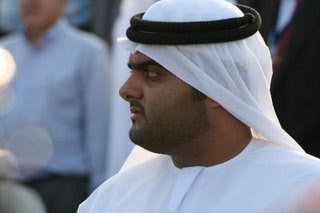
This is a further change to the
updated travel instructions (18 December 2008) from Dubai to Fujairah.
The relevant change is indicated in
italics:
There is a significant change in the road system for people travelling from Dubai to Fujairah and it hasn’t been clearly explained by the road signs.
I have made changes to my ‘Directions from Dubai to Fujairah’ posted at
this link.
Flick through to the heading 20.00kms (which marks the 20 kms mark from the Dubai International Airport Terminal 1) as this is where the change occurs.
PreviouslyAt this roundabout (at the end of Highway D50) where one could go (first right) to Dubai/Abu Dhabi or (next right) to Al Awir or further round (anticlockwise) to the Sharjah-Al Dhaid Rd, I had said coming in at a 6.00pm position you go around and exit at a 9.00am position.
Now
On the D50 highway just before the roundabout there is a sign on a green board that has instructions blotted out. At this roundabout there has been a significant change.
You still come in at a 6.00pm position but you turn right, taking the road to Jebel Ali and Abu Dhabi. This takes you in the opposite direction that you ultimately want to be going.
After only 200 metres, taking Exit 63 (Blue sign to Al Awir; Sharjah and Al Dhaid) you turn right like a hairpin bend on a Grand Prix track. This takes you back 150 metres where you turn right and go underneath the road and turn right again.
You drive another 150 metres (towards Jebel Ali and Abu Dhabi) and turn right (another hairpin bend) but this has you on the other side of the road and now back on the highway.
You drive another 150-200 metres and finally reach the roundabout [no longer].
The roundabout has been removed and the Al Awir direction is now reached by taking Exit 64 [see blue sign board pictured]. Don’t take this route to go to Fujairah.
Continue straight and you will find you are on the Sharjah-Al Dhaid Road with ugly pylons on the right side of the road. This is where you notice you are in the desert.
If you keep on going too far you will find yourself on the Al Khawaneej Rd heading back towards Dubai and you will have to go to the next roundabout before you can return and Take Two.
Dr Geoff Pound
Image: “The Al Awir direction is now reached by taking Exit 64 [see blue sign board pictured]. Don’t take this route to go to Fujairah.”
 In an extensive interview with Captain Mousa Murad, General Manager of the Port of Fujairah, Hugh Naylor of The National discovers that there are exciting prospects for Fujairah.
In an extensive interview with Captain Mousa Murad, General Manager of the Port of Fujairah, Hugh Naylor of The National discovers that there are exciting prospects for Fujairah.





















